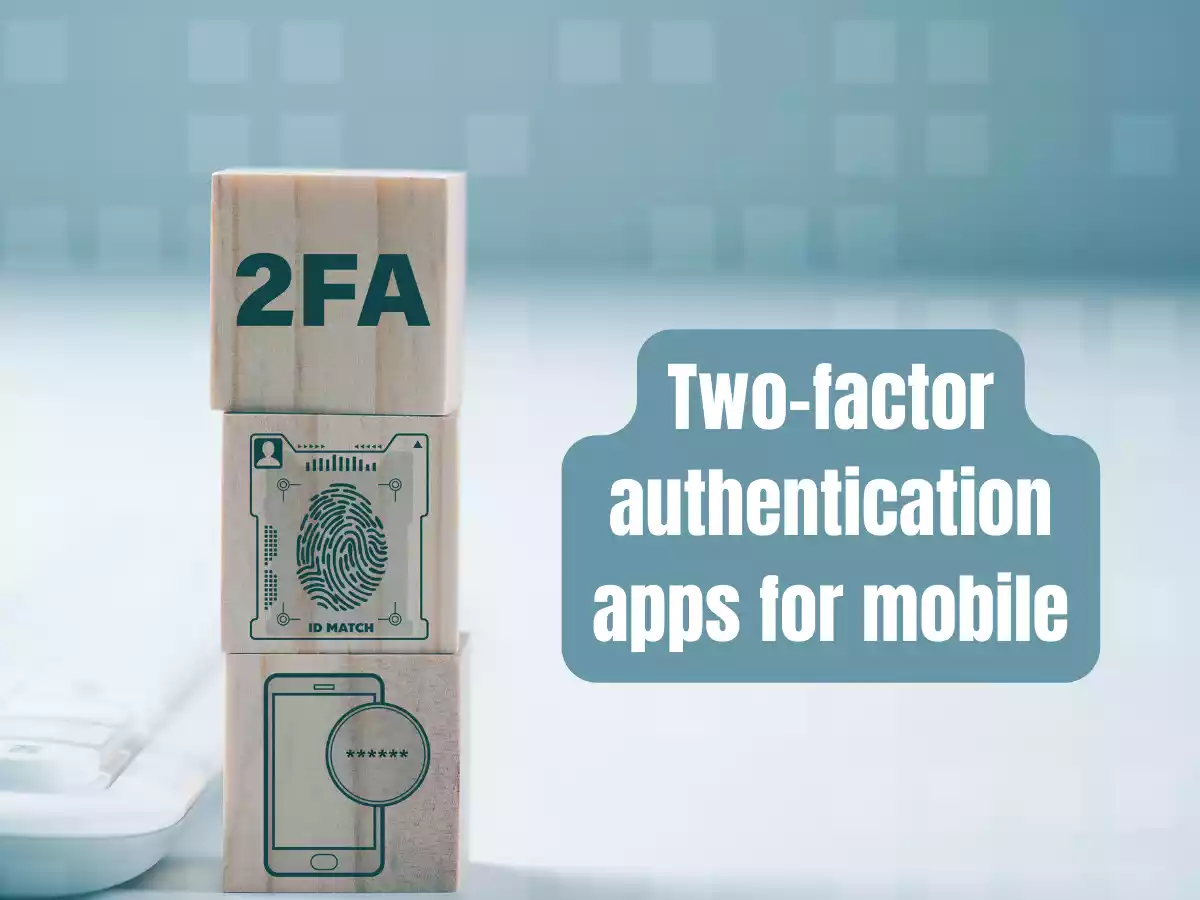In today’s digital age, protecting your personal and sensitive data is more important than ever. Two-factor authentication (2FA) is a popular method for enhancing security and adding an extra layer of protection beyond just a password. While there are various 2FA methods, mobile apps have become a popular choice due to their convenience and ease of use. In this blog post, we will explore two-factor authentication apps for mobile devices, as well as provide examples of popular apps and best practices for using them. By the end of this post, you will have a better understanding of how to use 2FA apps to better secure your personal and professional accounts.
Table of Contents
ToggleWhat are Two-Factor Authentication Apps for Mobile?
Two-factor authentication (2FA) apps for mobile devices are software applications that generate one-time passwords (OTPs) or codes that are used as a second factor of authentication when logging into online accounts. They work by using algorithms to generate unique codes that are valid for a short period of time, typically 30 seconds, and can be used only once.
When logging into online accounts that has 2FA enabled, the user enters their username and password as usual. Then, they are prompted to enter a unique code generated by their 2FA app. This code is time-sensitive and must be entered correctly within the allotted time frame to complete the login process.
Mobile 2FA apps are a popular choice because they are easy to use, do not require an internet connection to generate codes, and can be installed on multiple devices. Additionally, they are more secure than SMS-based 2FA, as SMS messages can be intercepted or redirected, while a mobile app generates the OTP locally on the device.
Examples of Two-Factor Authentication Apps for Mobile
There are many 2FA apps available for mobile devices. Here are some examples of popular 2FA apps for mobile:
Google Authenticator
This app is a popular choice for 2FA, as it is easy to use and can generate codes for a variety of services, including Google, Facebook, and Dropbox.
Authy
Authy is another widely-used 2FA app that provides an extra layer of protection with features such as multi-device support and automatic backups.
Microsoft Authenticator
This app is designed specifically for Microsoft accounts, but it can also be used for other services that support 2FA.
LastPass Authenticator
This app is designed to work with LastPass, a popular password manager, but it can also be used with other services that support 2FA.
Duo Mobile
Duo Mobile is a 2FA app that offers advanced security features such as biometric authentication and the ability to approve logins from a smartwatch.
These are just a few examples of the many 2FA apps available for mobile devices. When choosing a 2FA app, it is important to consider factors such as compatibility with your accounts and devices, ease of use, and security features.
Step-by-step instructions for setting up a 2FA app on a mobile device
Step 1: Choose a 2FA app There are many 2FA apps available for download on mobile app stores. Some popular ones include Google Authenticator, Microsoft Authenticator, and Authy. Choose an app that is compatible with your device and offers the features you need.
Step 2: Download and install the app Once you’ve chosen an app, download and install it on your mobile device. You can find the app on the App Store (for iOS devices) or Google Play Store (for Android devices).
Step 3: Enable 2FA on your account Log in to the online account you want to secure with 2FA and navigate to the security settings. Look for the 2FA section and select the option to enable 2FA. You may need to enter your password to proceed.
Step 4: Scan the QR code Once you’ve enabled 2FA on your account, the online service will display a QR code. Open your 2FA app and select the option to scan a QR code. Point your device’s camera at the QR code to scan it. The app will automatically recognize the code and set up a new account for the online service.
Step 5: Enter the verification code Once you’ve scanned the QR code, the 2FA app will generate a verification code. Enter this code in the online service’s 2FA setup screen to complete the setup process. The verification code will change every 30 seconds, so be sure to enter it before it expires.
Step 6: Save backup codes It’s a good idea to save backup codes in case you lose access to your 2FA app. Most online services will provide you with a set of backup codes that you can use to log in to your account if you can’t access your 2FA app. Be sure to store these codes in a safe place, such as a password manager or physical location.
How to use a 2FA app for logging into websites and applications
Once you’ve set up a 2FA app on your mobile device, using it to log in to websites and applications is a straightforward process. Here’s how to use a 2FA app for logging in:
Open the website or application you want to log in to and enter your username and password as usual.
After entering your login credentials, you will be prompted to enter a verification code. Open your 2FA app on your mobile device and locate the verification code for the website or application you are trying to log in to.
Enter the verification code on the website or application’s login screen.
If the verification code is correct, you will be logged in to your account.
It’s important to note that the verification code generated by your 2FA app is temporary and changes every 30 seconds or so. This means that you’ll need to enter the current code shown in the app at the time of login. Some websites and applications may also offer the option to remember your device, which will save you from having to enter the verification code every time you log in from the same device.
If you lose your mobile device or uninstall your 2FA app, you can still log in to your accounts using backup codes. Backup codes are usually provided by the website or application during the initial 2FA setup process, and they can be used to log in to your account if you don’t have access to your 2FA app. Be sure to keep your backup codes in a safe place, such as a password manager or physical location, and do not share them with anyone.
Best Practices for Using Two-Factor Authentication Apps for Mobile
Here are some best practices for using two-factor authentication apps for mobile:
Choose a reputable 2FA app
There are many 2FA apps available, so it’s important to choose one from a reputable provider with a good track record of security. Popular options include Google Authenticator, Microsoft Authenticator, and Authy.
Enable 2FA on all accounts
Whenever possible, enable 2FA on all of your online accounts, including social media, email, and banking accounts. This provides an additional layer of security to help protect your sensitive information.
Store backup codes securely
When setting up 2FA, most services will provide you with backup codes in case you lose your mobile device or the 2FA app stops working. Be sure to store these codes securely in a password manager or other secure location.
Keep your mobile device secure
Your mobile device is a key part of the 2FA process, so it’s important to keep it secure. Use a strong password or passcode to lock your device, and avoid installing apps from unknown sources.
Keep your 2FA app up-to-date
2FA apps may occasionally release updates with security enhancements or bug fixes. Make sure to keep your app up-to-date to ensure you’re getting the latest security improvements.
Don’t share your verification codes: Never share your verification codes with anyone, as they could use them to gain unauthorized access to your accounts.
Use a password manager
Using a password manager can help you generate and store strong, unique passwords for all of your accounts, which can help reduce the risk of a security breach.
By following these best practices, you can help ensure that your online accounts are more secure and better protected from unauthorized access.
Conclusion
In conclusion, two-factor authentication apps provide an additional layer of security for your online accounts, helping to protect them from unauthorized access. By requiring a verification code in addition to a password, 2FA makes it much more difficult for attackers to gain access to your accounts, even if they manage to obtain your password. Setting up and using a 2FA app on your mobile device is a simple and effective way to enhance your online security, and following best practices such as choosing a reputable app, keeping your device secure, and using a password manager can help you get the most out of this important security feature. With 2FA, you can enjoy greater peace of mind knowing that your online accounts are better protected from cyber threats.




